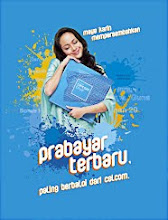Whether it's a spray of WD40 to make meat shine, or ice cream cones actually containing scoops of mashed potato, we've all heard about the 'tricks' used in food photography. But does it still go on? We ask a food photographer and a food stylist to set the record straight.
Natural styling
It's generally believed that hours of tinkering and prepping go into making those dishes in magazines and cookery books look perfect on the page. But according to food stylist Genevieve Taylor, there has recently been a move towards more natural styling. Food stylists no longer spend hours fluffing up, painting and arranging food. "It's very quick", she tells us. "We cook something, take it out of the oven and photograph it." So whereas a photo of a perfectly-cut cake or spotless pie dish used to be trendy, now we love fruit oozing out from under a pie crust, or crumbs tumbling from a home-made cake. "Exactly," says Genevieve, "it's kept as natural as possible."
Fake steam
Steam can be a nuisance to the photographer, fogging up the camera lens and billowing out in all directions. So, photographers and stylists have some techniques up their sleeves for making food look piping hot, if it's gone cold. "We use tampons," says Genevieve. "We soak them in water and put them in the microwave, because they're absorbent and let off steam." Cotton wool balls are also used, and can be placed strategically behind the plate for a natural-looking wisp of steam. We've heard of incense and cigarette smoke being used to create a similar effect, but photographer Carl Pendle thinks these techniques are outdated, commenting, "I don't think that goes on very much these days".
Fake food
We've heard about mashed potato being scooped into ice-cream cones (because real ice cream melts under the hot lights) and sponges being painted and brushed with oil to look like toast. Carl told us that he'd once heard of plastic fruit being placed in the background of shots. But while some of these tricks were probably used in the past, it doesn't seem the done thing any more. HERS Agency told us that "most food stylists like to do as much as possible for real," before adding: "suffice to say, mashed potato is NOT used instead of ice-cream."
Padding
Ever seen a photograph of a burger or a sandwich that looked plump, glossy and everything in it was perfectly stacked? There has been talk of this kind of effect being achieved by padding — sticking small sponges between the layers to puff it up. But this often results in a fake look — something that doesn't excite the readers of cookbooks and food magazines. "I've been known to use the odd toothpick to hold down an unruly sandwich", Carl told us, "but that is as far as it would go".
Boot polish to create shine
We've heard of food photographers and stylists using WD40, hairspray, petrol, glue and boot polish to create texture and shine on meat or desserts before photographing them. Carl sets the record straight. "Some foods don't always look great even though they taste fantastic," he says. "Like most things, food photography follows trends and in the past tricks were used to make food look great that meant the food being photographed wasn't palatable." But, as Genevieve reveals, a great photo of a juicy steak can still be achieved with natural techniques.
For example, olive oil can be brushed onto the cut surface of meat "to give it a bit of a gleam." Carl told us that he had, in the past, heard rumours of boot polish and hairspray being used on food, but assured us that nowadays, "most of the food photography you see in magazines and newspapers is real food taken in natural light and it hasn't been tampered with that much. And anyway, most food photographers like to eat what they've photographed!"































